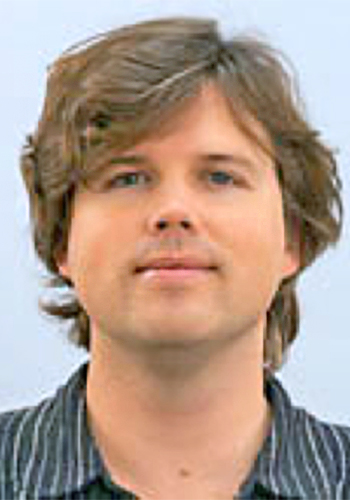Health and Behavior: Prosthetic Hand Design and Control
Led by Erik Engeberg, Ph.D.

Erik D. Engeberg received the Ph.D. degree from the University of Utah, Salt Lake City, UT, USA, in 2008. He is an Associate Professor at the Ocean and Mechanical Engineering Department, Florida Atlantic University, Boca Raton, FL, USA. His research interests include bioinspired control, robotics, energy harvesting, electrophysiology, and compliant sensors. His research has been supported by the National Science Foundation through the National Robotics Initiative and I-Corps programs and also by the Office of Naval Research.
Dr. Engeberg has served as the Associate Editor of the 2014 and 2016 IEEE International Conference on Robotics and Automation (ICRA). He received the Outstanding Paper Award at the 2012 International Conference on Control and Automation Systems. He has delivered numerous invited presentations, most recently at the 2015 IEEE ICRA Robotic Hand Grasping and Manipulation Workshop, Seattle, USA.
This REU project is focused on the design of robotic prosthetics. The REU participant will learn effective practices in measuring all of the hand joint angles of human test subjects during common tasks of daily life, such as opening doors and pouring liquid.
The participant will first measure these hand motions using the CyberGlove available in FAU’s BioRobotic’s Laboratory, and then perform a principal component analysis on the corresponding hand joint angle data to assess the impact that each joint contributes to the overall motion during the tasks. For simplicity, joints with negligible impact on overall motion will be eliminated, and functions of time will be fit to the most impactful joints. Care will be taken to ensure that the functions will be smoothly differentiable and appropriate for robotic motion planning. After accommodating any joint space discrepancies between the human hand and the 20-degree of freedom Dexterous Shadow Hand in FAU’s BioRobotics laboratory, the human-inspired joint angle trajectories will be programmed using the Robot Operating System (ROS). Finally, comparable robotic hand experiments will be performed using the newly defined robotic motion plans, and the efficacy of the joint angle mapping methodology will be quantified. The project will provide a meaningful experience for the participant, while contributing to Erik Engeberg’s ongoing work in this area.